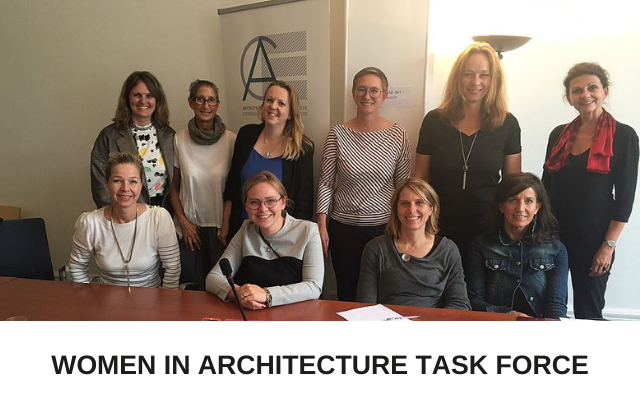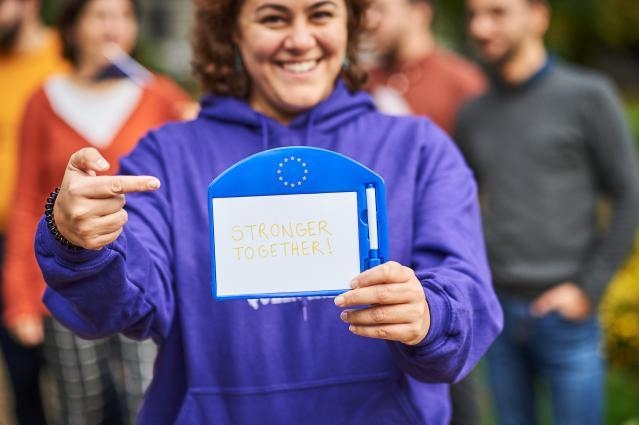
- News
- Publications
- Press releases
- Links
- Contact
- Members area

To celebrate International Women's Day 2021, ACE talked with Ursula Faix, Chair of the Women in Architecture task force to explore what we're doing at ACE to develop new strategies for balancing the gender gap in architecture.
ACE: Can you tell us more about the Women In Architecture (WiA) task force?
Ursula Faix: "It is widely known that although more than 50% women study architecture only 10% to 20% make it to become an architect, a professor, a dean. These figures are also undermined by the latest ACE sector study revealing not only a gender gap but also a pay gap. In order to promote the growth of women in the profession President Georg Pendl has established this task force".
ACE: Who are the members?
Ursula Faix: "The hard core of the group consists of Mos in Austria, Great Britain, Ireland, Belgium, Slovenia, Germany, Hungary, Spain, the Netherlands and Luxembourg. Supporting members are Italy, the Nordic Countries Norway, Denmark, Sweden and Finland as well as Lithuania and Lativia".
ACE: What is the main objective?
Ursula Faix: "The objective of the work group is to find means how to close all gender gaps concerning female architects. Finding means to close the visibility gap, the pay gap, the stereotype gap and the value gap. It is great to develop strategies with colleagues from different countries in Europe. Important for me personally is the focus on the benefits of inclusiveness and that gender equity is the solution to achieving goals. Extensive studies show that diverse teams perform better. Therefore promoting women pays off and increases the value of company. So it is a smart move to increase the diversity in your office".
ACE: What are your latest works and future projects?
Ursula Faix: "The pandemic has shifted the meetings in Brussels to the internet, and we will meet end of March 2021 for the next time. After developing the policy of the work group, we are focusing on how to implement the policy with a hands -on approach booklet, working title "100 Things You Can Do To Promote Equity and Diversity In Architecture As a boss, as an employee, as a dean, as a member of the faculty, as an entrepreneur, as a parent, as a citizen*.“ which will be the main topic four the next meeting" .
* About "100 Things You Can Do To Promote Equity and Diversity In Architecture As a boss, as an employee, as a dean, as a member of the faculty, as an entrepreneur, as a parent, as a citizen. „
There are policies and mission statements, well intentioned resolutions and letters of intents. And then there is every day life. What do I need to do in order to support less paid women in my office? How can I find out how my office is performing in terms of equity and diversity? What can I do if I find out that men are getting larger bonuses than female co-workers? What can I do to make my faculty more diverse and competitive? It’s the small things which bring big changes. This hands on approach book helps you to do the first step now.“
ACE: What are the upcoming challenges and opportunities?
Ursula Faix: "Women in architecture is a male and female issue. I wish our work group was more diverse. Getting our toolkit out! Celebrating the resonance of WIA all over the world".
About the WiA task-force:
The current share of female architecture students is more than 50% throughout European architecture faculties. This has not always been the case as women have only been admitted in European universities since 120 years. The postgraduate gender gap in architecture is rooted in three main gaps:
- Pay gap: Women earn less than men in the profession, and the gap widens with the level of hierarchy.
- Visibility gap: Women tend to be less visible in the public arena, on panels, in the public perception.
- Stereotype gap: Stereotypes are mainly rooted in sociology and culture, amplified by the public image-making factors like advertisements and movies.
The aim of the WiA task force is to develop new strategies for balancing the gender gap in architecture, because every Institution that empowers women empowers itself.
RELATED CONTENT
International Women's Day 2021
Statement by the European Commission ahead of International Women's Day 2021
COVID-19 pandemic is a major challenge for gender equality
Ahead of International Women's Day, the Commission published its 2021 report on gender equality in the EU, that shows the negative impact of the COVID-19 pandemic on women.
